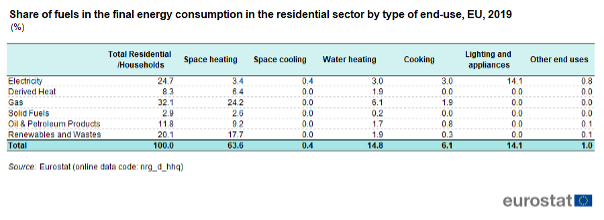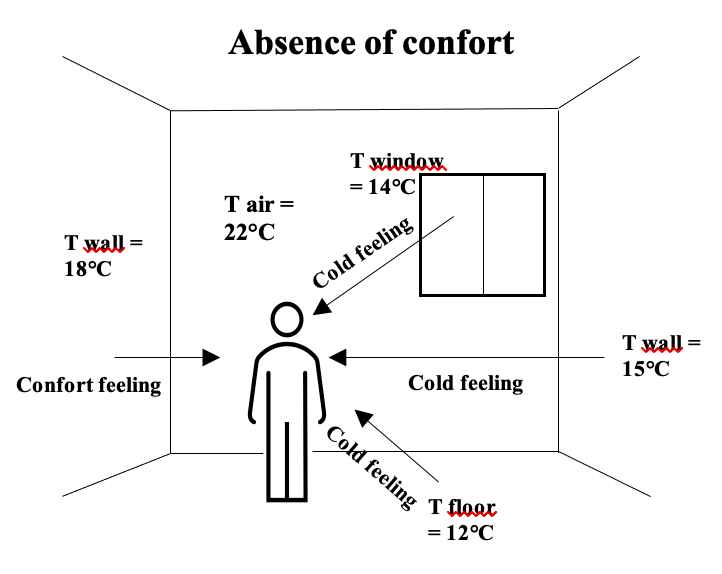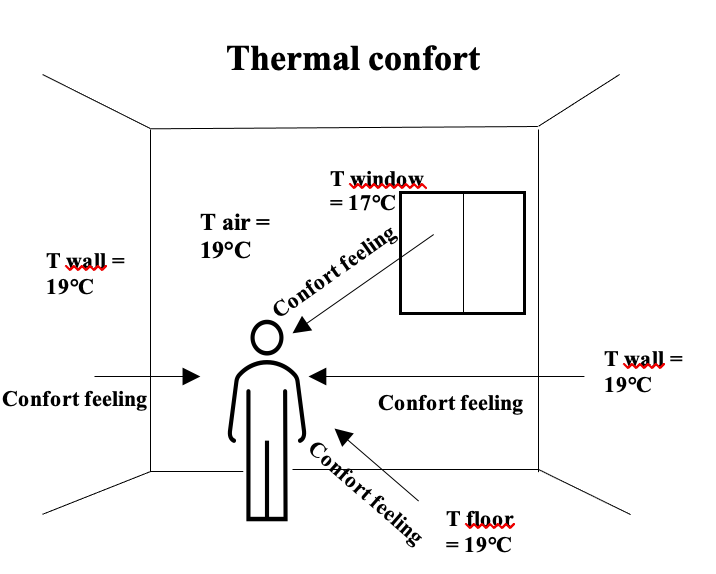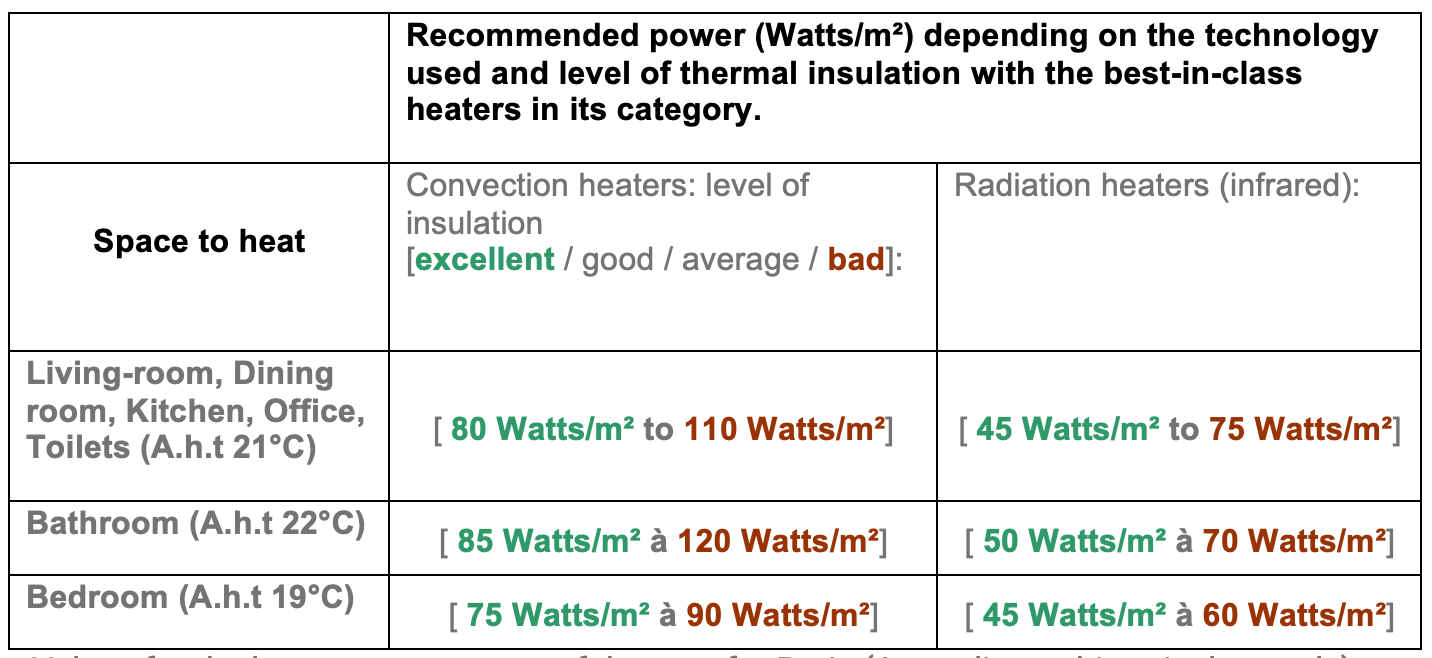Biggest energy consumption in EU !
In 2019, in Europe, 63.6% of the house's energy consumption was related to space heating, 24.2% was covered with non-renewable natural gas and 17.7% from renewable and wastes, meaning resources burning (wood / waste)

Source: https://ec.europa.eu/eurostat/statistics-explained/index.php?title=Energy_consumption_in_households
Today’s solutions:
In parallel to this fact, today most heating solutions rely on the physical principle of convection which occurs when heat is carried away from the heated element via moving air.
However, convection is not the most efficient solution for space heating, the phenomenon of heat stratification in the air induces energy over-consumption without managing to homogeneously heat the space, which brings a bad thermal comfort.

Temperatures on °Celcius

Space not homogenously heated. T on °Celcius

Space homogenously heated. T on °Celcius
Heating and energy:
Whatever the solution, heating is an energy-intensive activity.

As showed earlier, most of the heating energy source comes from combustion (gas, wood, waste) because they produce an important amount of energy which can be directly used for heating, but at the same time they release greenhouse gases.
We’ve also seen that today’s most energy-efficient electricity-based heating solution (low carbon or not depending on electricity production) are the radiation heaters.
However, this solution is still energy-intensive relatively to other uses of electricity in a household. To get the magnitude of the energy required to heat a space we can rely on the recommended power (Watts/m²) for heating:

Values for the lowest temperature of the year for Paris (According to historical records). Notion defined by the norm NF EN 12831 called “température de base extérieure”. A.h.t = Average heating temperature. Source : https://www.foxof.com/nombre-et-puissance-radiateurs-electriques/
Even though these values appear as “low”, a 30m² space would require (to simplify we will use 80 Watts/m² as the average): 30 m² * 80 Watts/m² = 2.4 kWatts of electrical power.
Considering a program of 5 hours heating per day, the monthly energy consumption for such space would be 2.4kWatts * 5 hours * 31 days = 372 kWh.
In order to have a global end-to-end system efficiency we must consider the end-to-end electricity use efficiency, from production to the electrical outlet: 34,22% in Europe.

(1)For wind power these values represent the % of availability of the production
Annexed documents in project files « SunHeater System Dimensioning.excel »section “Electricity Prod Efficiency”
Source 1: https://www.irdeme.org/Bilan-quantitatif-des-modes-de-production-d-energie-electrique-1619
Source 3 : https://www.connaissancedesenergies.org/le-mix-electrique-de-lunion-europeenne-en-2020-220218
 Luis Parada
Luis Parada
Discussions
Become a Hackaday.io Member
Create an account to leave a comment. Already have an account? Log In.